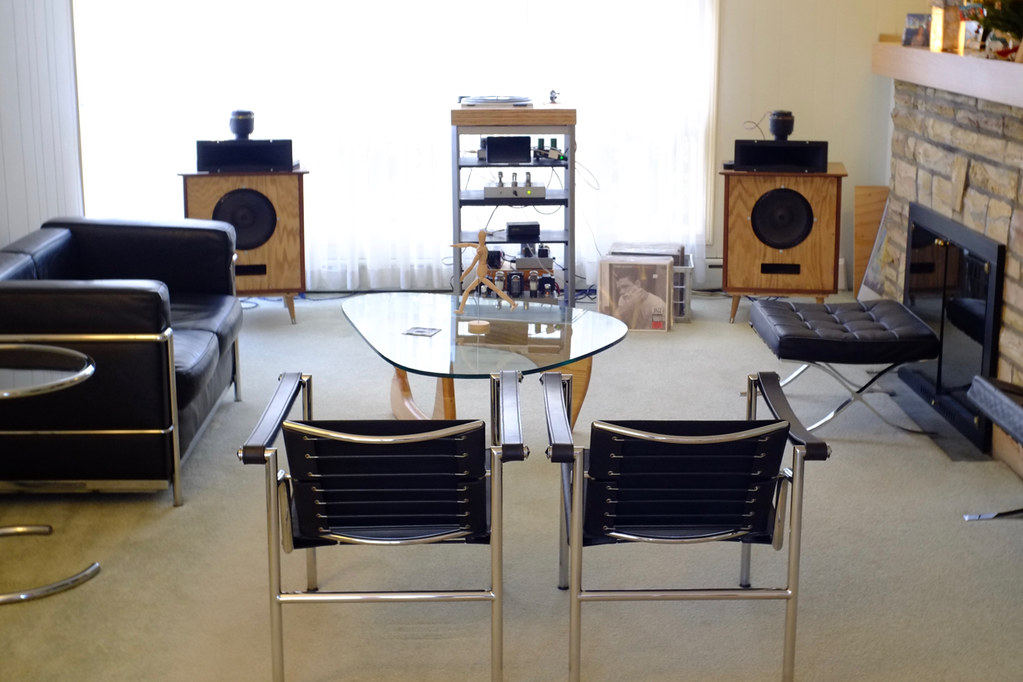 |
| Thorens TD 124 Mk. I + Stax UA3NL |
My Thorens TD 124 Mk. I and Mk. II have seen so much action and deserved pampering.
The heavy iron platter created a "dome" on the main bearing end cap of the Mk. I.
Both sides of its original Nylatron thrust pad were dented. So this past weekend I went on eBay and ordered two sets of 6mm bronze end caps that each came with two plastic thrust pads and gaskets, an idler wheel + a few other TD 124 bits from Simone Luchetti of Audio Silente.
 |
| Backyard around 11am, 3/7/18 |
Shipping was swift, the parts were delivered by FedEx from Rome, Italy yesterday morning before the height of the blizzard.
I started work on the main bearing of the Mk. I.
Fit and finish are first rate!
Since the unit was already on the work bench, I cleaned and lubricated the motor also.
Although the original main bearing end cap on the Mk. II was not as dented as the Mk. I, I also replaced it for future generations. 😁
Given the attention to detail Swiss engineers put into the design of the TD 124, that flimsy main bearing end cap was a gross oversight. The finely machined 6mm bronze end cap from Audio Silente definitely adds structural integrity to the main bearing. I also noticed that the platter spins at least twice as long after the motor is shut off = less friction.
While testing the Audio Silente idler wheel on the bench, I realized that even if the rubber was still supple on my original idler wheels, the bearings were not as silent as the Audio Silente idler, perhaps due to wear. While deciding whether to order another idler wheel from Simone or Oilite bearings from the Spanish guy, we lost power...😞
With about 2 hours left of daylight, I consoled myself by looking at audio porn. 😎
 |
| Thorens TD 124 Mk II + Audio Technica AT1501-II |
The idler wheel comes with 3 extra O-rings - 2 red and another black. Because the pre-installed black O-ring already starts faster than my stock idler wheel, I did not try the red silicon O-ring which is supposed to give an even quicker start.
The Audio Silente idler wheel truly lives up to its company name. I had never been able to bring the performance of my TD 124s to this level of silence.





































